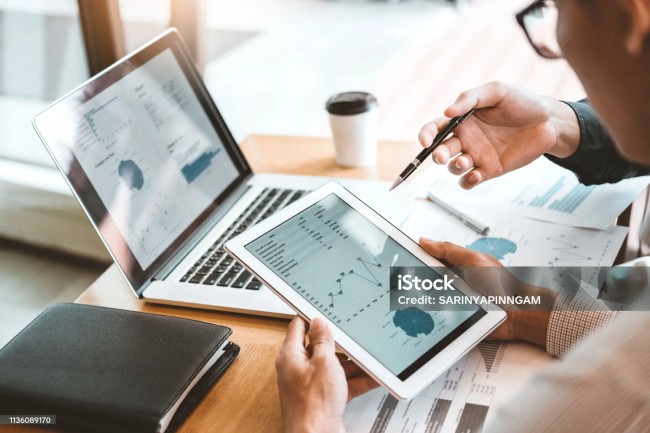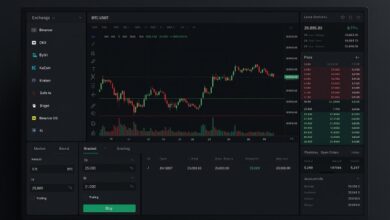Why Multi-Asset Exposure Matters More for Traders in 2025

Markets in 2025 are not what they used to be. With global inflation trends, AI-driven news cycles, and sector-specific volatility reshaping how assets behave, sticking to just one type of market — like stocks or forex — may no longer be enough.
For traders using Contracts for Difference (CFDs), a multi-asset strategy has gone from a nice-to-have to a must-have. Whether you’re day trading, swing trading, or running a more systematic approach, diversifying across asset classes is one of the smartest moves you can make right now.
This article explains why multi-asset exposure matters more than ever in 2025, especially if you’re trading CFDs, and how it can help you adapt, protect capital, and unlock new trading opportunities in today’s fast-moving environment.
What Does Multi-Asset Exposure Mean?
Understanding how to trade CFDs starts with recognizing the flexibility they offer. Contracts for Difference allow you to take long or short positions on a wide range of assets without owning the underlying instrument. This means you can react quickly to global trends and shifts across markets using leverage.
Multi-asset exposure means trading across different types of markets — not just sticking to one class like equities or forex. It involves building positions in:
- Stocks and indices
- Forex pairs
- Commodities
- Cryptocurrencies
- Bonds or interest rate instruments
- ETFs or synthetic baskets
When trading CFDs, you can take long or short positions on all of these using leverage and without owning the underlying asset. This gives traders the freedom to react to global trends and shifts across markets.
But with that flexibility comes a choice: focus narrowly, or take advantage of wider exposure? In 2025, many traders are choosing the latter.
The 2025 Trading Landscape Is Complex — and Connected
If you’ve traded in the last year, you’ve probably noticed something: events in one asset class quickly ripple into others. A central bank rate decision moves forex markets, which then affects equities. Energy prices influence inflation, which drives bond yields. And crypto reacts to everything from AI headlines to ETF approvals.
This interconnectedness is exactly why multi-asset awareness is so important. As a stock trader, expanding your focus to include commodity prices and yield curves will give you a complete, powerful picture of the market.
Here are a few realities shaping 2025:
- Central bank rates remain elevated, keeping bond yields in focus
- AI and tech disruption are creating wide divergence between sectors
- Energy and commodity prices are responding to geopolitical realignments
- Crypto markets are influenced by traditional finance developments and ETF flows
- Retail traders have better access to global assets than ever befor
Benefits of Multi-Asset Trading with CFDs
CFDs are uniquely suited for multi-asset trading because they allow access to multiple markets on a single platform, using the same margin structure and risk management tools.
Here’s how traders benefit from multi-asset exposure:
1. Better Diversification of Risk
Instead of relying on just one asset class, you can spread exposure across uncorrelated or inversely correlated instruments. For example, if tech stocks are falling, a short position on an index or a long trade in gold might help balance your risk.
2. Opportunity in Any Market Condition
When stocks are flat, commodities might trend. When forex is quiet, crypto may break out. Multi-asset strategies help you stay active even in slow cycles by switching focus to where the movement is.
3. Macro Awareness Improves Timing
Watching bond yields, oil prices, or currency pairs alongside your primary trades gives you better insight into big-picture momentum. This helps time entries and exits with greater context.
4. Efficient Use of Capital
CFD platforms typically offer margin-based trading across all asset classes, allowing you to reallocate capital quickly and adapt to new signals without needing separate accounts or brokers.
Example: A trader long on the Nasdaq (US100) could simultaneously short EUR/USD and hold a gold CFD — all within a single margin pool.
Popular Multi-Asset Setups in 2025
In the current market, here are a few strategies that traders are using to take advantage of cross-asset relationships:
Tech vs Energy Rotation
- Long: Nasdaq 100 or major AI stocks
- Short: Brent Crude or Natural Gas
- Why it works: Tech and energy often respond differently to macro trends. When tech rallies on growth, energy may lag. When inflation spikes, energy may lead while tech retreats.
USD Sensitivity Trades
- Long: DXY (US Dollar Index) or USD/JPY
- Short: Gold or emerging market indices
- Why it works: A stronger dollar often weighs on commodities and non-US equities. This inverse relationship is a go-to for macro-informed traders.
Safe-Haven Triangles
- Long: Gold or USD/CHF
- Short: High-yield stocks or volatile FX pairs
- Why it works: When market sentiment weakens, traders rotate into safe havens. This strategy captures those flight-to-safety flows.
What to Watch Before Expanding Exposure
Adding more assets to your trading plan doesn’t mean jumping into everything at once. Multi-asset trading should still follow a clear framework and discipline.
Here’s what to consider:
- Correlation analysis: Some assets move together more than you think. For example, tech stocks and Bitcoin have had increased correlation during high-growth periods.
- Volatility normalization: A 1 percent move in gold is not the same as a 1 percent move in a small-cap stock. Use ATR or standard deviation to size positions fairly.
- Macro calendar alignment: Watch for overlapping events — like Fed announcements — that can affect multiple positions at once.
- Platform capabilities: Use a CFD provider that offers seamless switching between assets, real-time data, and consistent margin policies across instruments.
A good rule of thumb: if you can’t explain how two assets interact, don’t trade them at the same time.
Final Thoughts: Adaptability Is the Edge in 2025
Amid a year of macro uncertainty, AI shifts, and geopolitical change, your greatest advantage is the ability to fluidly adapt your strategy across asset classes, ensuring your trading remains resilient and consistently profitable.
CFD trading platforms offer a unique edge here. They make it possible to move between crypto, commodities, forex, and indices with ease, using the same tools, capital, and charting strategies.
Multi-asset trading is not about complexity. It’s about options. In 2025, the traders who win are those who can shift gears quickly, read across markets, and trade with discipline — wherever the opportunity appears.



